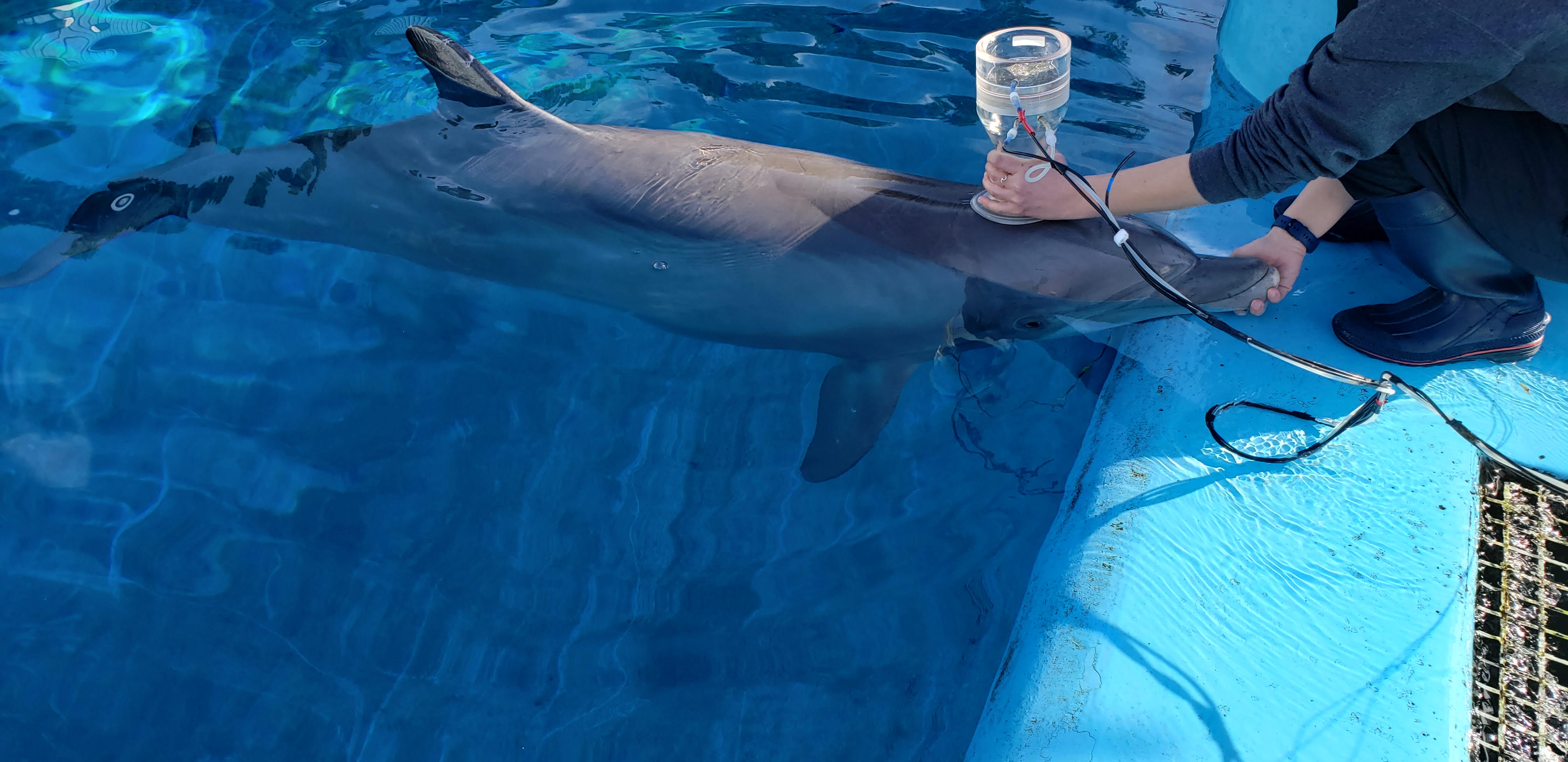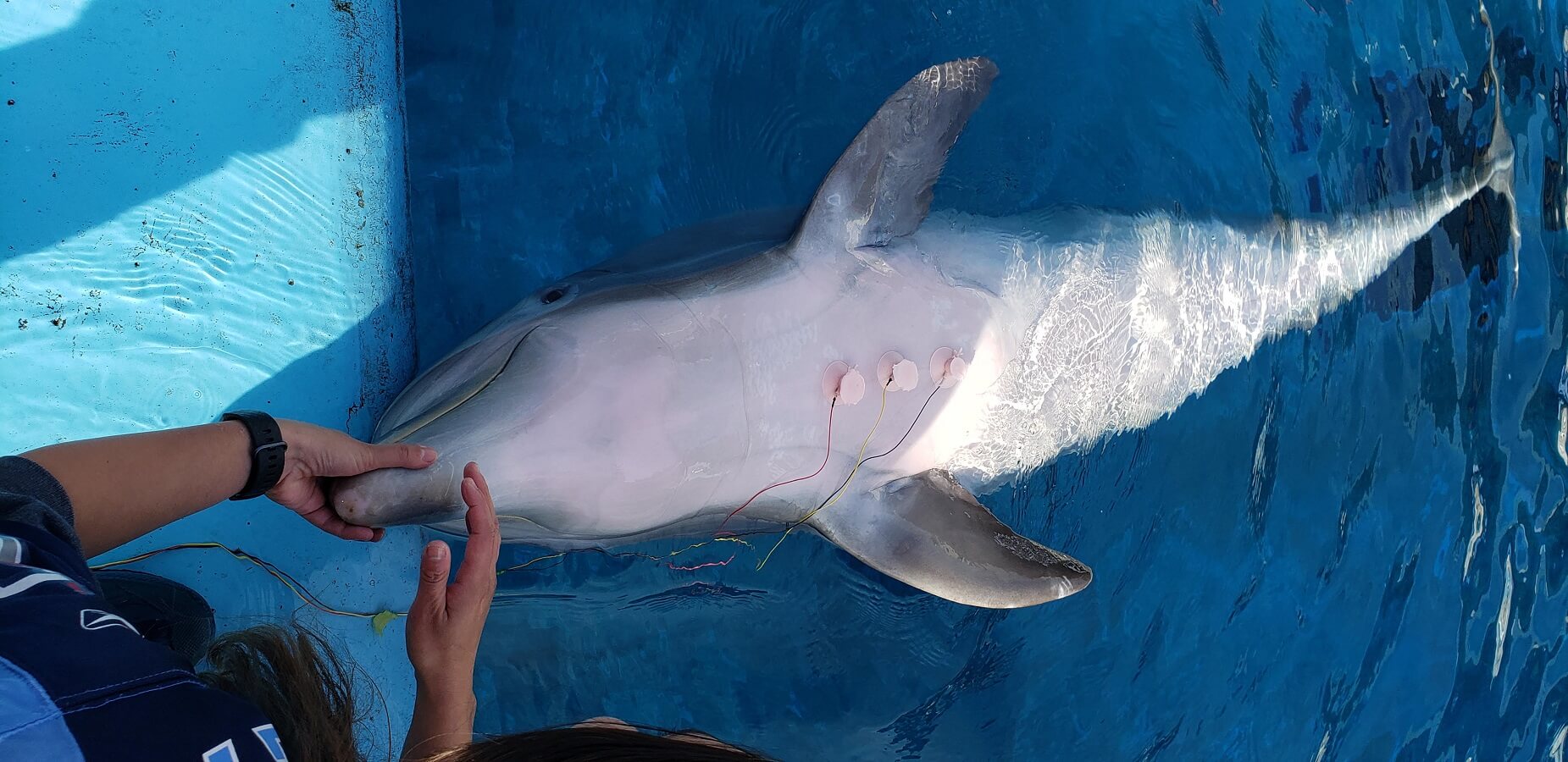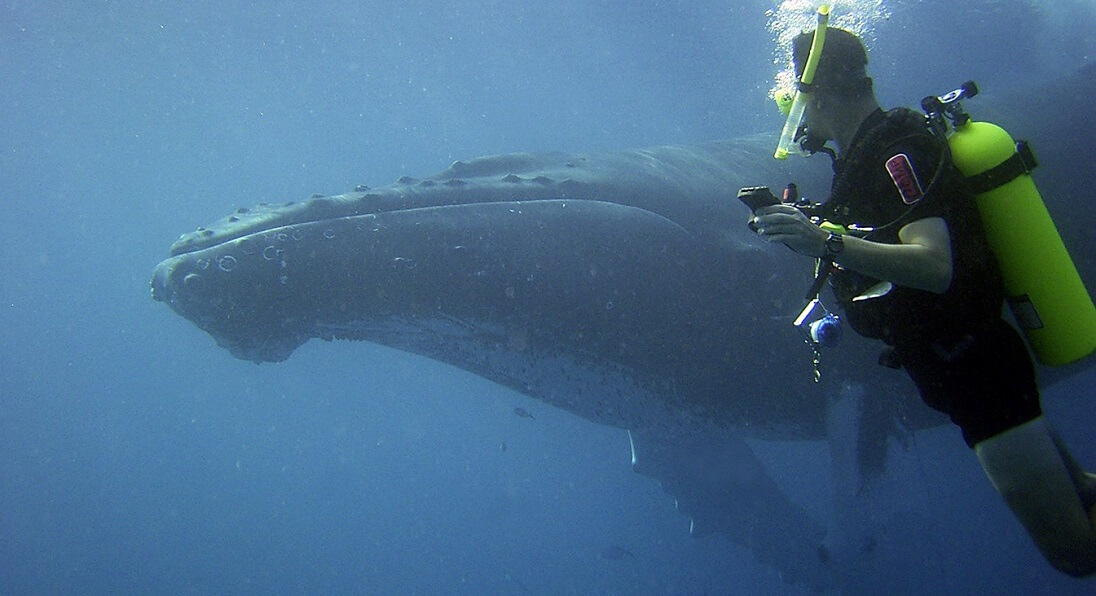Because they live in water and must constantly dive to forage or to move, cetaceans have developed a great number of physiological adaptations to their marine environment. For example, to conserve oxygen while diving, cetaceans are able to have a very low heart rate – as low as 2 beats per minute (bpm) in the case of some blue whales!
Dolphins – and possibly other cetaceans – seem to even be able to voluntarily lower their heart rate by anticipating their expected dive time. This astonishing discovery gives us further insight into the physiological mechanisms that allow cetaceans to perform deep and extended dives without difficulty. Here’s how…
Short dives, long dives
To reach their conclusions, the researchers worked with three dolphins in captivity. The animals were trained for several months to adapt the duration of their dives according to a visual signal displayed 5 to 10 seconds before they submerged their blowhole. Depending on the signal, the dolphin had to hold its breath for a short period, a long period, or as long as the dolphin wished.
Using a set of electrodes, researchers were able to monitor the dolphins’ heart rates in their different types of dives, and the result was clear: when the dolphin knows it is going to take a longer dive, its heart rate quickly drops to very low levels. Its pulse can thus go from 100 to 20 bpm in just a few seconds. The heart rate does not drop as rapidly or as low when the dolphin knows its dive will be short or that the duration is undetermined.
“In this study we show that the change in heart rate during diving varies depending on anticipation. This suggest[s] that dolphins conditionally reduce their heart rate,” explains Andreas Fahlman, lead author of the study and director of the Valencia-based Oceanogràfic Foundation.
Fahlman is quick to point out, however: “There is no anatomical evidence for ‘somatic’ (voluntary) control […]. However, what we see is that the dolphins make decisions how to alter heart rate if they are told what we expect immediately (5-10 seconds) before the breath-hold and therefore, the dive response is not a reflex (it does not always happen to the same extent) nor under full autonomic control.”
Benefit of lowering one’s heart rate
It is definitely impressive. In humans, some yogis are able to voluntarily regulate their heart rate, but the meditation required to do so usually takes more than a half-hour. Dolphins, on the other hand, make the adjustment in a matter of seconds. What is the purpose of this adaptation?
For the research team, this finding supports a theory developed over the past few years: the selective gas exchange hypothesis. “This hypothesis explains how marine mammals can selectively exchange oxygen and carbon dioxide without exchanging nitrogen and thereby maximize aerobic dive duration and also minimize the risk of the bends,” explains Andreas Fahlman.
Indeed, by using the gas exchanges that normally take place in their lungs, marine mammals and sea turtles risk storing too much nitrogen in their blood and tissue, thereby exposing themselves to decompression accidents that are well known to divers (which are due to variations in nitrogen solubility as a function of depth). To avoid this problem, dolphins appear to be able to partially collapse part of their lungs and regulate blood circulation to different parts of these organs. By doing so, they are able to conserve the exchanges of CO2 and oxygen while limiting the amount of nitrogen entering into the blood. Very convenient!
To better understand the hypothesis of selective gas exchange :
Decompression sickness
However, for the authors of this theory, “This hypothesis requires a few different assumptions and in the dolphins these include […] conditioned controlled of heart rate and cardiac output […].” We now know that this postulate has been validated.
But this voluntary control of the body over gas exchange has its disadvantages. Under stress, for example, the balance can suddenly be upset, the heart rate can increase on its own, blood can be sent to the wrong parts of the lungs, and absorbed nitrogen can create decompression issues during the animal’s ascent. A phenomenon that might explain how an underwater explosion might be linked to cetacean deaths or strandings.
Fortunately, “by understanding the effect stress has on dolphins’ heartbeat regulation, then we can modify our actions accordingly to minimize harm” Andreas Fahlman explains to the magazine Inverse. For example, instead of sudden explosions, we could instead produce gradually increasing noises during underwater explorations.”
Do you prefer to learn through videos? The study is briefly summarized in a “One Minute Ocean” episode.







